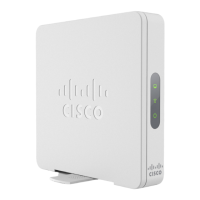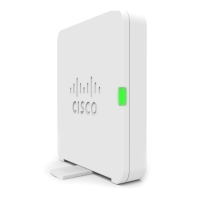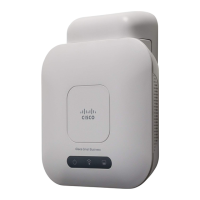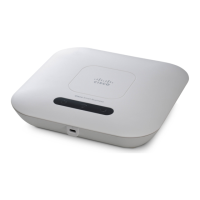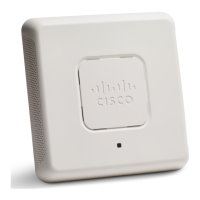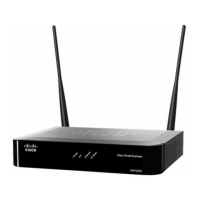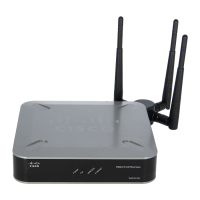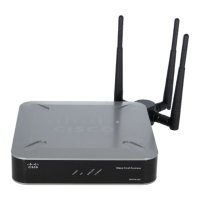Global Settings
This feature is relevant to WAP361 device.
Use the Global Settings page to enable or disable the QoS functionality on the WAP device, and configure
the trust mode and other QoS settings if you are using a Cisco WAP361 device.
Follow the instructions below, if you are using a Cisco WAP361 device and the QoS mode is enabled. This
helps configure the trust mode and other settings for the Ethernet switch:
Step 1 Select Client QoS > Global Settings.
Step 2 Check Enable to enable QoS Mode.
Step 3 Choose the trust mode of Ethernet switch from the Trust Mode list. The options are:
a) CoS/802.1p—The priority of a packet received from an Ethernet port is based on the 802.1p value in this packet. If
the incoming packet is not tagged, we will consider it as 0. You can configure the priority mapping settings in the
CoS/802.1p to Output Queue Table.
b) DSCP—The priority of a packet received from an Ethernet port is based on the IP ToS/DSCP value in this packet.
If the incoming packet is not of IPv4/IPv6 type, we will consider it as 0. You can configure the priority mapping
settings in the DSCP to Output Queue Table.
c) Port—This is the port-based mode. The priority of a packet received from an Ethernet port is based on CoS attached
to this port. You can configure the CoS value of each port on the Port Settings page (see Port Settings for more
information). Then you can configure the priority mapping settings in the CoS/802.1p to Output Queue Table.
Step 4 If the priority of a packet is based on CoS/802.1p, the packet will be scheduled into a corresponding queue per the
configuration in the CoS/802.1p to Output Queue Table. Queue scheduling method can be set in the Scheduling Settings
area.
Step 5 If the priority of a packet is based on DSCP, the packet will be scheduled into a corresponding queue per the configuration
in the DSCP to Output Queue Table. There are 4 queues supported. Queue scheduling method can be set in the
Scheduling Settings area.
Step 6 In the Scheduling Settings area, you can set the scheduling method of queues. When it is in strict priority (SP), the
priority is Queue3 > Queue2 > Queue1 > Queue0. When it is weighted round robin (WRR) mode, the queues are scheduled
in a round-robin method according to the service weight of each queue. WRR mode is only allowed as [Q0, Q1], [Q0,
Q1, Q2] and [Q0, Q1, Q2, Q3]. The range of WRR weight is 1 to 49.
Step 7 Click Apply.
Guest Access
You can create up to two CP instances on the WAP device. The CP instance is a defined set of instance
parameters. The instance can be associated with one or more VAPs.
When you use a wireless client connect to VAP, and access any URL, the web will redirect the URL to Web
Portal Locale page, which you have configured in the Access Control/Guest Access page.
Web Portal Locale Table defines the show style of the authentication web page while the Guest Group
Table decides the users’ username and password.
To configure Guest Access Instance:
Cisco WAP150 Wireless-AC/N Dual Radio Access Point with PoE / Cisco WAP361 Wireless-AC/N Dual Radio Wall Plate Access Point with PoE
96
Access Control
Global Settings

